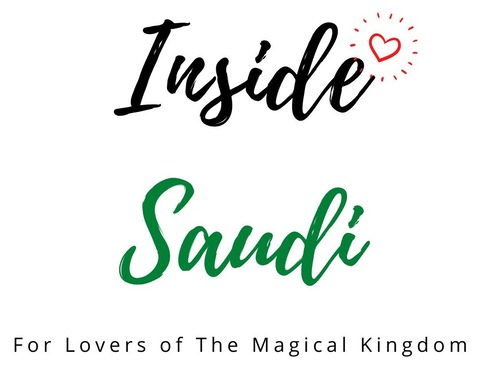In Saudi Arabia, you don’t see the Saudi flag much. However, on Saudi National Day, 23rd of September each year, the flag can be seen everywhere, over public buildings, kids and families sporting handheld flags and displays on large screen TVs.
On the Saudi flag, there is an inscription in Arabic and I often wondered about its meaning, so I decided to ask Saudi people about their flag and how they regard it. Here is what I found.

So, what does the Saudi flag mean? The Saudi flag is colored green (Pantone 330C) that on two sides has inscribed on it in white Arabic letters the Islamic Testimony of Faith (Shahada) that reads لَا إِلٰهَ إِلَّا الله مُحَمَّدٌ رَسُولُ الله translated as ‘There is No God But Allah and Mohammed (SAW) Is His Messenger.’ Also, below the script, there is a horizontal sword pointing to the left symbolizing justice.
Generally, Saudis feel very proud of their flag precisely because of its association with the first King of Saudi Arabia, King Abdul Aziz (1875-1953) and the unification of the kingdom during the period 1902-1932.
But more importantly, the flag itself also has a very special meaning for the 1.5 billion Muslims worldwide. Written on it is a statement that lies at the very heart of Islam.
The Islamic Declaration of Faith
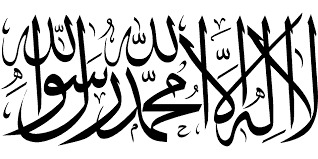
There is No God But Allah And Mohammed (SAW) Is His Messenger
Written on the flag are the words in Arabic لَا إِلٰهَ إِلَّا الله مُحَمَّدٌ رَسُولُ or ‘There Is No God But Allah And Mohammed (SAW) Is His Messenger.’
To hear the Testimony of Faith spoken click on the following audio link:https://upload.wikimedia.org/wik…
It is both written and read starting from the right to the left. It is a white Thuluth calligraphic script, set against a rectangular green background with flag dimensions of 2 to 3.
Tawheed – The Oneness Of God or Allah
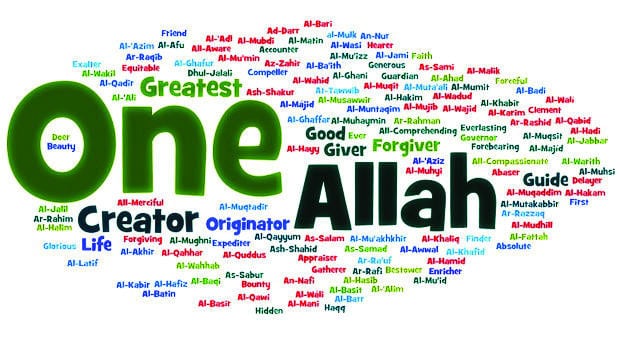
The words on the Saudi flag form the basis of the principle of Tawheed (Oneness of Allah) a belief that lies at the heart of the Islamic faith.
They are also the spoken words of the Testimony of Faith uttered by a person who swears to this reality and by those who enter Islam for the first time.
Essentially Tawheed توحيد means unification. It is the idea of monotheism or One God. It is the most fundamental Islamic belief and forms the basis of faith for all Muslims everywhere.
God is One. There is no other or nothing in this world or universe like him.
Each day, Muslim utters the Testimony of Faith multiple times in Arabic privately and publically to reaffirm their belief that Allah is One and that Prophet Mohammed (SAW) is Allah’s messenger.
Shirk The Sin of Idolotory Or Polytheism (Multiple Gods)
The opposite of Tawheed is Shirk. It means to ascribe or to associate partners with God (Allah). It is the biggest sin in Islam for a person to pray to, invoke or accept any other Gods besides the one true God Allah.
A person who does (Shirk) is called a Mushrik. The word Shirk or Sharik is used in Arabic to mean ‘to share’. In a religious sense, it has the idea of sharing a partnership with Allah. It is an abominable act in Islam and has serious consequences.
Click Here to read more about Shirk in an article explaining why Non-Muslims are not allowed to Enter the cities of Mecca and Madinah.
The Sword – Historical
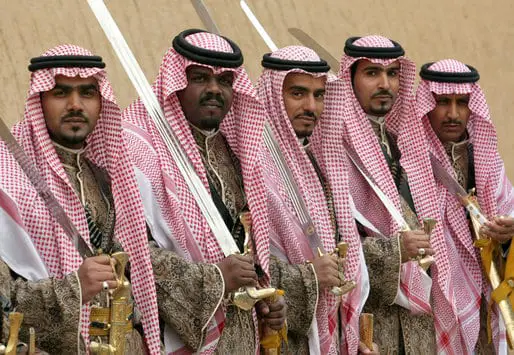
Courtesy White House Archives
The horizontal sword on the Saudi flag has both historical and symbolic significance. I have asked Saudis about their feelings. For most of them, the sword reminds them of King Abdul Aziz and the story of the Unification of the Saudi Kingdom.
Before King Abdul Aziz and during the 18th century, flags used in Arabia had a crescent moon inscription in them.
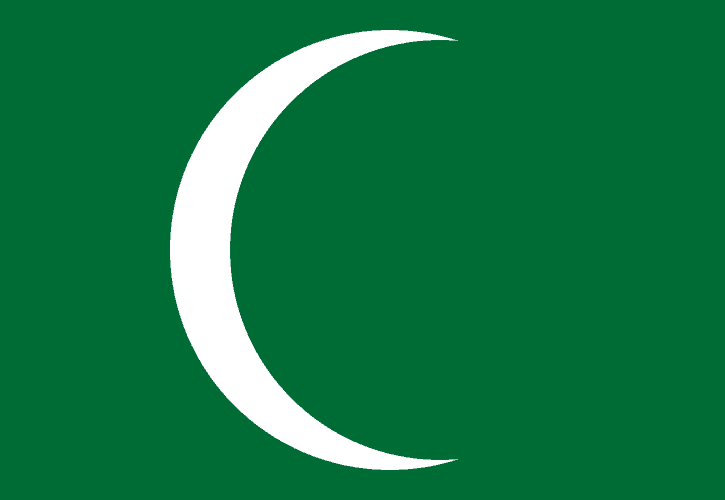
Then, from 1917 to 1932, the flag was black, white and green stripes with a red triangle.
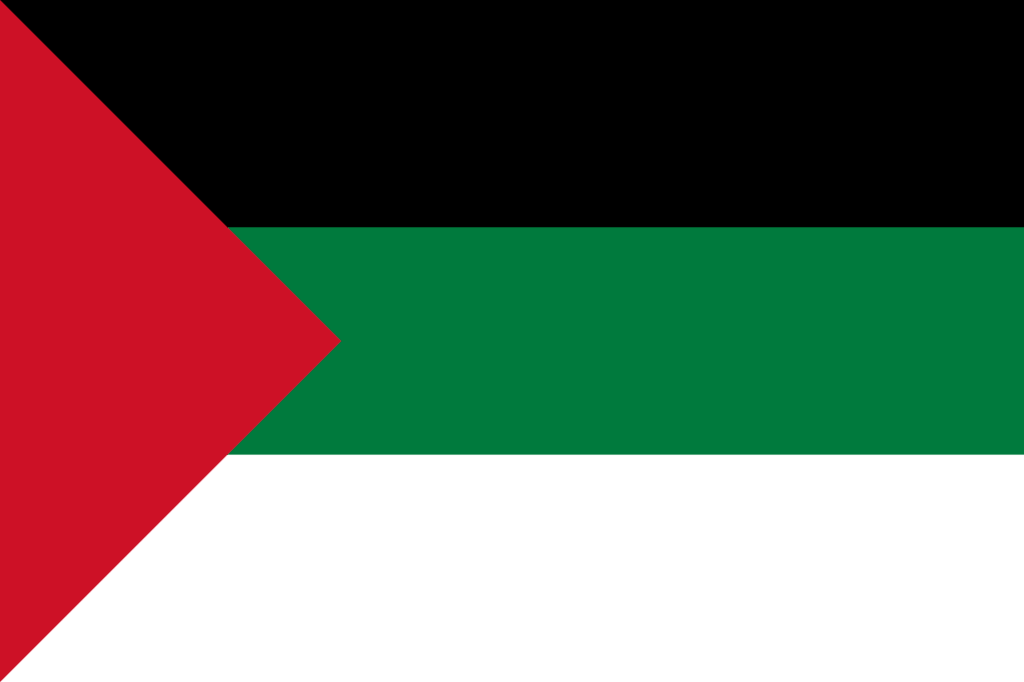
Also, before unification, there were flags used that displayed the Islamic creed or Testimony of Faith لَا إِلٰهَ إِلَّا الله مُحَمَّدٌ رَسُولُ for the regional emirates and sheikhdoms.
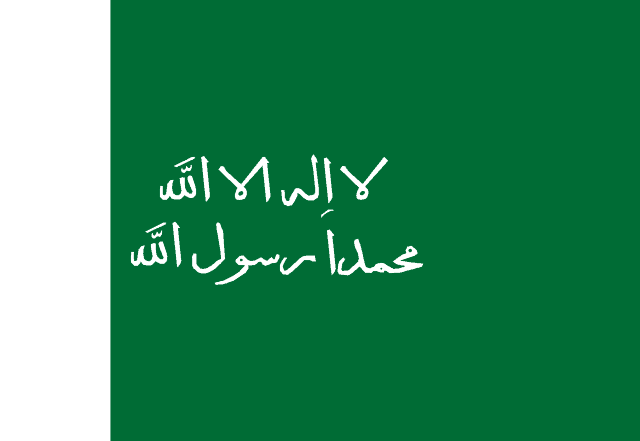
Courtesy Wikipedia
The current Saudi flag that displays a horizontal sword was first added in 1921 by King Abdul Aziz. The present design was standardized in 1973 during the reign of King Faisal Al Saud.
Even today, you can still see flags with the two cross swords design, but they are used for the official Saudi emblem.
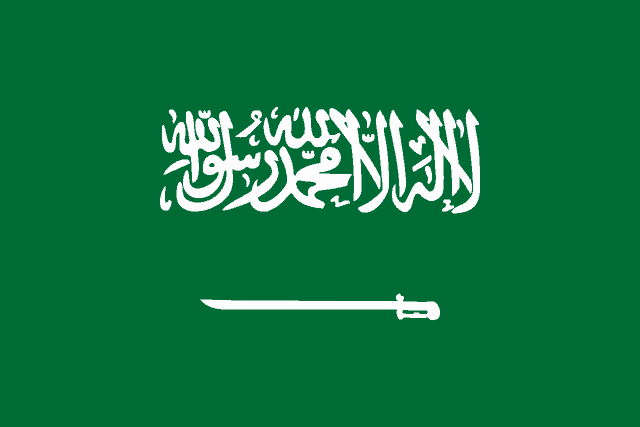
The Sword- Symbolic
Both historical and symbolic- the sword has many means and connotations. To most people, it is the symbol of leadership, of power and justice. It is often used as a decorative military emblem. It usually confers honor, virtue, and distinction to the wearer or holder of a sword.

Since 1950, the emblem of Saudi Arabia is the crossed swords and palm tree. The two swords represent the unification of the two old Kingdom of Hejaz and the Sultanate of Najd in 1926. The swords symbolize justice.
The palm tree symbolizes Saudi prosperity for its people, its heritage, history, and resources.
The two cross swords guard the palm tree at their center and represent the forces employed in defense of the Saudi nation.
In Christian terms, it is the symbol of the word of God and a symbol of liberty and strength. The sword was/is always used to make knighthoods conferred on loyal subjects by the King, Queen for duties or services his / her country.
Significance of The Color Green
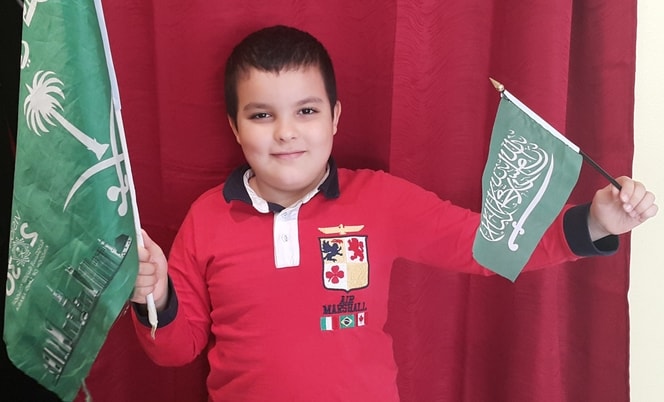
Green is the color of Islam and the favorite color of the Prophet Mohammed (SAW). The color has a Quranic association with paradise.
In describing the joys of heaven promised to Muslims, Allah mentions:
Reclining on green cushions and beautiful fine carpets.
Sura Al Rahman (The Merciful) (55:76)
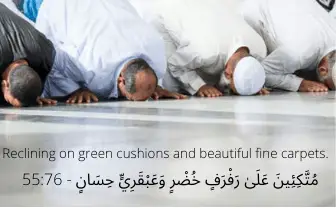
Sura Al Insan (76:21)
Upon the inhabitants of paradise will be green garments of fine silk and brocade. And they will be adorned with bracelets of silver, and their Lord will give them a purifying drink.
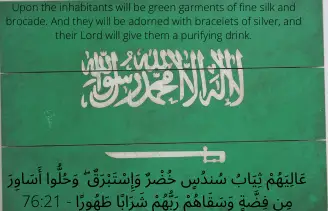
Together with Saudi Arabia, the color green is also used as a symbol of Islam by a number of other countries that include Afghanistan, Algeria, Azerbaijan, Comoros, Mauritania, Pakistan, and Sri Lanka.
Hoisting The Saudi Flag
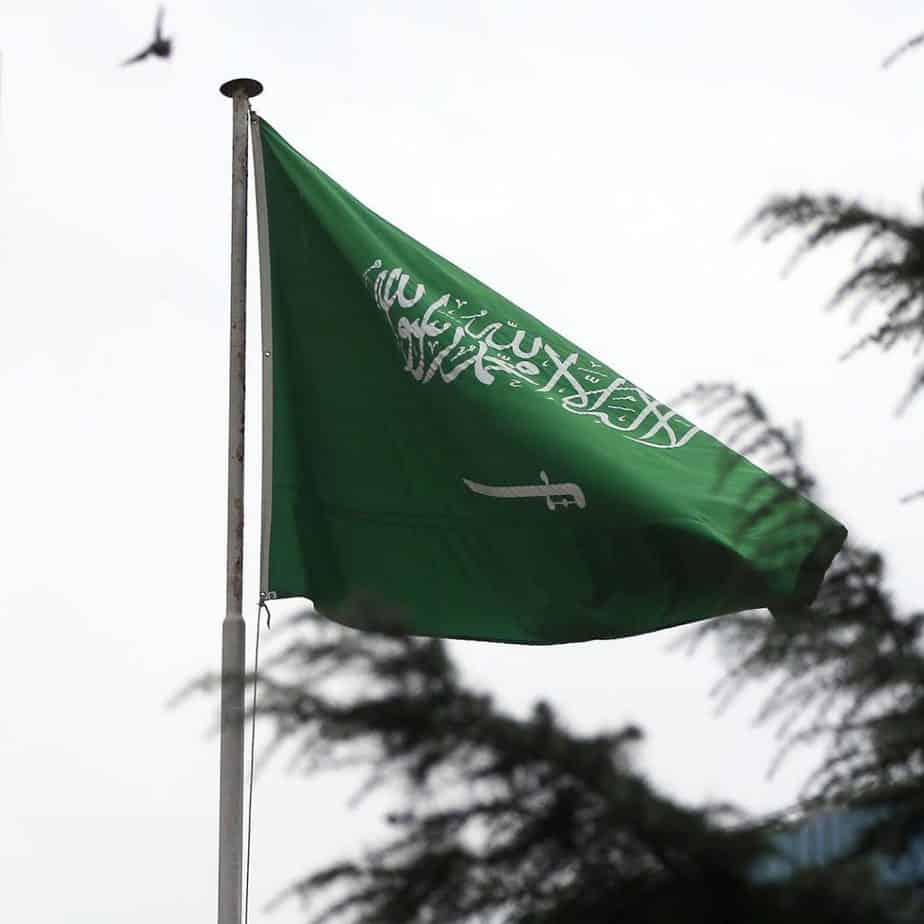
The Saudi flag has the exact same image on both sides. They are obverse, meaning whichever side you are looking at, they both read the same with the inscription going from right to left and the sword laying horizontally upright pointing off to the left.
The Saudi Flag CANNOT be hoisted vertically only horizontally. This is because of the name of Allah appears on it. Allah’s name must NEVER be inverted or soiled.
Also, the words of the Islamic creed (Shahada) must be kept high and always with the flagpole to the left of the attached flag.
When the flag blows in the wind, it can be read easily on both sides
Hoisting The Saudi Flag Half Mast
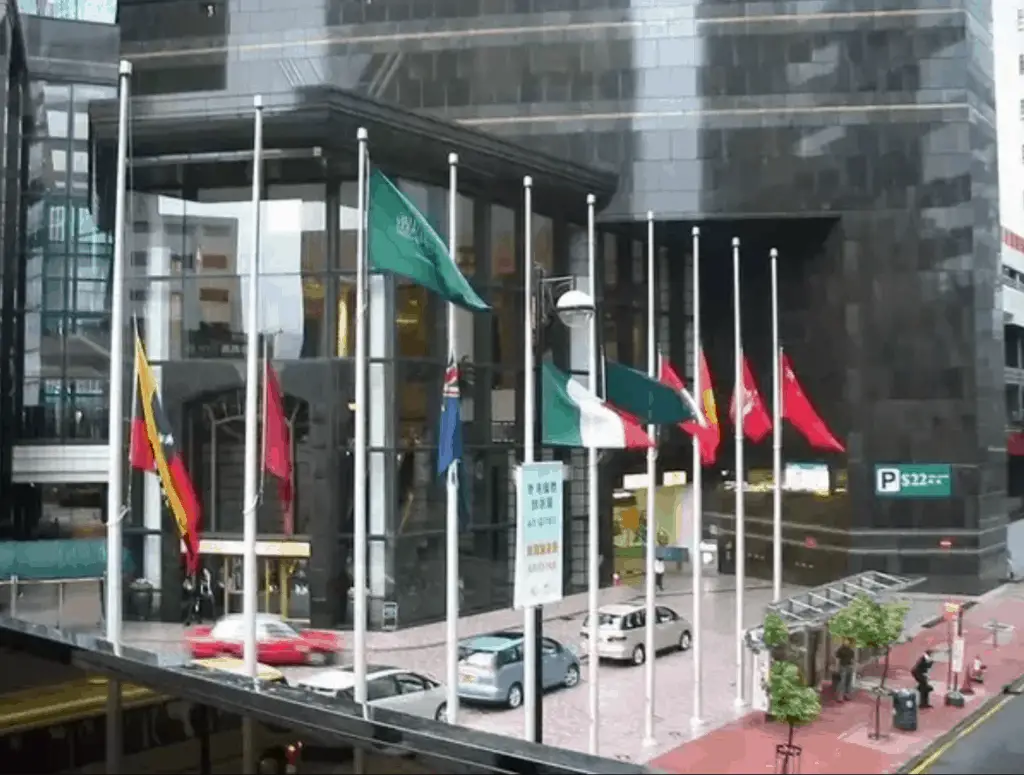
For the same reason above, the Saudi flag must NEVER be hoisted to half-mast upon the death of a dignitary or famous celebrity as is the custom in most other countries.
The reason is that the inscription on the flag that reads لَا إِلٰهَ إِلَّا الله مُحَمَّدٌ رَسُولُ الله or ‘There Is No God But Allah and Mohammed (SAW) Is His Messenger’ is one of the 5 pillars of Islam and should never be lowered for anyone or anything.
The 5 Pillars of Islam
- Testimony of Faith (Shahada)
- 5 Daily Prayer (Salat)
- Zakat or Alms Giving
- Fasting the Month of Ramadhan
- Hajj Pilgrimage.
Prohibition Of Flag Use
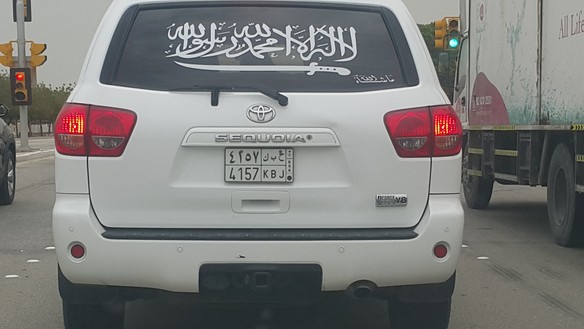
For these reasons, it is also prohibited to use the Saudi flag for designs on clothes, carpets, mugs, teeshirts, etc nor on items that would result in its soiling or debasement.
There have been two occasions that protest by Saudi Arabia halted the use of the printed design of the Saudi flag on match footballs. In the 2002 World Cup, FIFA wanted to print participating countries flag insignias on footballs.
The Saudi complaint was that kicking the balls containing the inscriptions was WHOLLY unacceptable because they would carry the name of Allah on them. So, the printing balls for Saudi Arabia was halted.
Also, demonstrations occurred when the USA distributed free footballs to the children of the Khost Province, Afghanistan that carried images of the Saudi flag in 2007.
Rationale For The Respectful Treatment Of The Saudi Flag
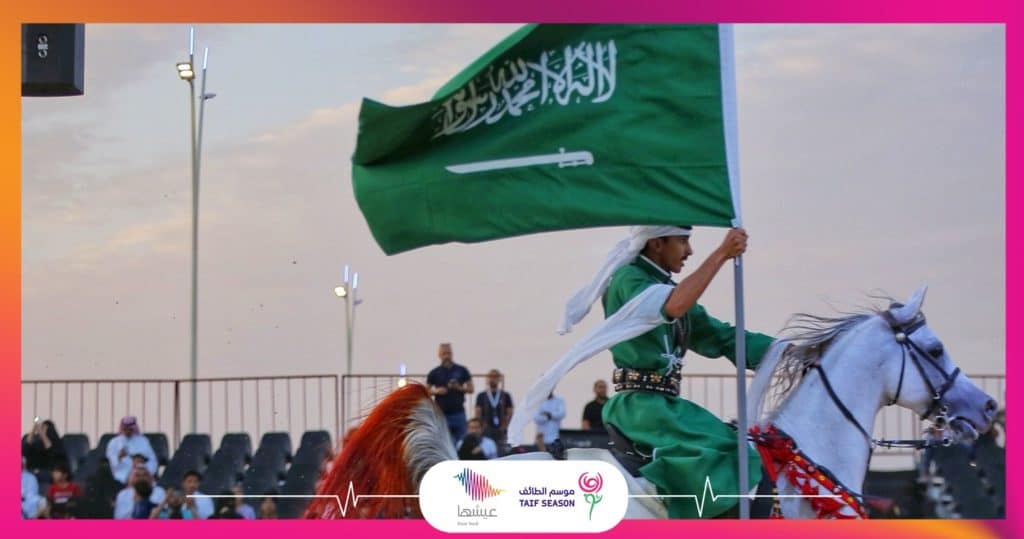

The Saudi flag is NEVER EVER lowered and no one ever bows or salutes to it. That is because of its fundamental, unequivocal meaning.
Muslims should not bow and salute to flags. Muslims only bow or prostrate to God (Allah). Nothing else!
It is a major sin in Islam for Muslims to bow to anything other than God (Allah) in an act of worship say a flag, statues, pictures, photos, animals, symbols, people, kings, leaders, angels, demons and the like.
Also, out of deference for the words inscribed on the Saudi flag, it should NOT be inverted, used as a cover, table cloth, bowed to, dirtied, disrespected, walked on or.left to rot and fester.
Nothing is to be associated with God (Allah) least of all a flag, a piece of cloth that has no intrinsic worth or value.
At the same time, Muslims would NEVER allow the flag to be misused, dirtied or desecrated in any way because the name of Allah appears on it.
In conclusion, Muslims do not bow to nor allow the Saudi flag to bow to other people/things out of their conviction of the meaning of words written on it; that is the most fundamental principle of Islam, Tawheed.
Related Questions
Are there different versions of the Saudi flag in use today? Yes, nine other versions exist. Six are for the armed forces. Each of the six displays the motto of Islamic shahada but everyone has different colors and individual logos. Two are reserved for the Royal family. One is the Royal Standard for the King and the other for the Crown Prince.
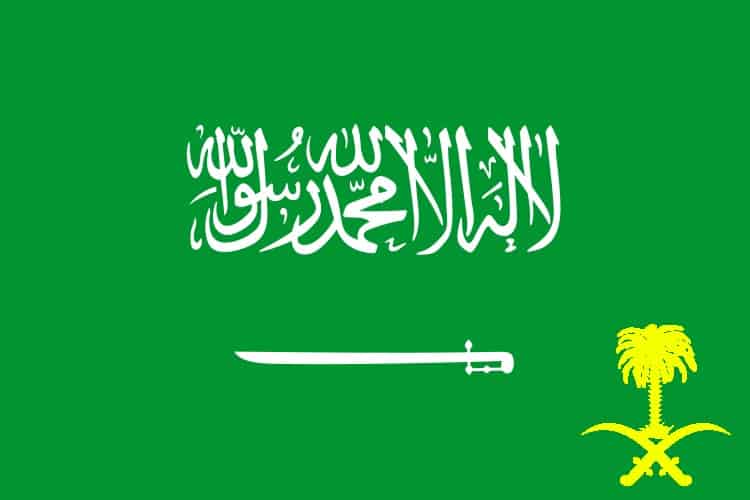
Gold Cross Swords for The King
Silver Cross Swords for The Crown Prince
What happens if the Saudi flag is desecrated? The legal consequences of any violation of the Saudi flag are severe. Even the smallest desecration is considered blasphemous and subject to the strictest of punishments for offenders based inside the Saudi kingdom.
